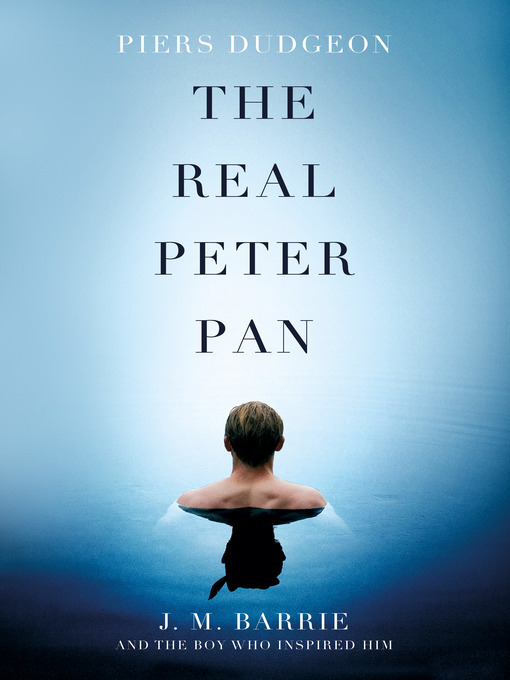
The Real Peter Pan
J. M. Barrie and the Boy Who Inspired Him
کتاب های مرتبط
- اطلاعات
- نقد و بررسی
- دیدگاه کاربران
نقد و بررسی

April 11, 2016
Dudgeon’s (Maeve Binchy) newest literary biography is ostensibly about Michael Llewelyn Davies, the young boy beloved by author J.M. Barrie and immortalized as Peter Pan. However, when he declares near the end, “This book is not principally about Barrie,” most readers will be surprised. The book would appear to be very much about Barrie and his excessive, and somewhat seamy, interest in Michael and his brothers, both as sources of inspiration and as the children he never had. Michael, on the other hand, remains a cipher. Part of this may be a lack of sources and the fact that Michael only lived to be 20. But his voice barely registers; readers will see him almost exclusively through other people’s eyes, and very dimly at that. Intelligent and sensitive, Michael was the fourth of five sons born to Sylvia and Arthur Llewelyn Davies. He became the favorite of James Barrie, who inextricably entwined himself in the boys’ lives and insinuated himself into the family as “Uncle Jim.” Even Michael’s death, in 1921, remains an enigma: did he drown accidentally or commit suicide? Either way, he did indeed fulfill the tragic image of the boy who would not grow old. This unsatisfying biography produces few other insights.

May 1, 2016
With his broad knowledge of J.M. Barrie (1860-1937) and his contemporaries, Dudgeon (Maeve Binchy: The Biography, 2014, etc.) tells the disturbing story of his odd relationship with the Llewelyn Davies family.The author points out that the story of Peter Pan features a spiritual dimension of childhood that transcends adulthood. Barrie adored the children of Sylvia and Art Llewelyn Davies, and the games he played with them in Kensington Gardens helped in the creation of Peter Pan. It was a process of improvisation and underwent constant revision over the years. Barrie readily admitted that he adored Michael in the strange sort of Edwardian love. The author explains it as best he can, noting the strong bond of boys away at public school. Michael unknowingly ruled Barrie. Stories were presented to Michael, who would finish them or reject them. Sylvia was the daughter of George du Maurier, author of Peter Ibbetson, a book that greatly influenced Barrie. Du Maurier was also a strong supporter of the concept of psychic ability, and Sylvia inherited his "more than earthly" aura. Barrie shared his paranormal fascination, and Sylvia encouraged Barrie's obsession with her children, almost as if he were a second nanny, taking them off her hands. Her husband, mother, and especially her son, Jack, disliked his control. Jack was recommended by Barrie to Osborne Naval College to get him out of the way. After the death of Sylvia, Barrie took over the boys' upbringing. It was a life of privilege and fishing excursions to Scotland, where Michael learned to cast off Barrie's yoke. Insisting that there was no homosexual side to Barrie's love, Dudgeon explores the man and his character, his obsession with death and the afterlife, the cruel side to his writings, and the strange illusions he created around himself. A simultaneously interesting and depressing story of arrested development, as sometimes occurs with those who write of children's heroes.
COPYRIGHT(2016) Kirkus Reviews, ALL RIGHTS RESERVED.

June 1, 2016
Dudgeon (Maeve Binchy) revisits subject matter similar to that in his book Neverland: J.M. Barrie, the du Mauriers, and the Dark Side of Peter Pan in this work about writer J.M. Barrie's (1860-1937) Svengali-like hold over the entire Llewelyn Davies family of five sons. The analogy is apt because Svengali (from the novel Trilby) creator George du Maurier was the boys' grandfather; his family and their paranormal interests figure significantly here. Barrie, the author of Peter Pan, gained control over the children by becoming their guardian after their parents died. Described as childlike, he enjoyed playing with toys, confused fantasy with reality, and was socially gauche. He also had a sinister side, and there are hints of a sexual element in his interactions with the boys. As his relationship with Michael Llewelyn Davies became increasingly unhealthy, the boy came to resent it, and his death by drowning at the age of 21 may have been suicide. The narrative reads like a novel with digressions about people and places that may detract from the main point being explored, and sections are based on speculation rather than research. VERDICT This title will be of interest to Peter Pan and du Maurier fans.--Denise J. Stankovics, Vernon, CT
Copyright 2016 Library Journal, LLC Used with permission.

May 1, 2016
Michael Llewelyn Davies was the fourth of five brothers who, collectively, were the inspiration for James M. Barrie's great invention, Peter Pan. But it is Michael who was Barrie's favorite. Uncle Jim, as the boys called him, loved Michael; indeed, as Michael's brother Nico later said, he was in love with Michael, whobeautiful and otherworldlywas brilliant, the most intelligent of the Davies boys and the most athletically gifted. He was also, in his late teens, an increasingly gifted artist, who wished to study in Paris. He never got there, for tragically he drowned in 1921 at age 20, along with his best friend and possible lover, Rupert Buxton. Was their joint death a suicide pact? Michael's brother Nico believed it was, but, if so, Dudgeon fails to demonstrate why this might have been in a book that is more a biography of Barrie than of Michael, whose personality remains elusive. Clearer is the smothering, unhealthy influence of Barrie not only on Michael but also on all the brothers, except the second oldest, Jack, an outsider in the family. Regardless, the book makes for a fascinating and almost unbearably sad story, and it makes a valuable contribution to the Barrie literature.(Reprinted with permission of Booklist, copyright 2016, American Library Association.)

























دیدگاه کاربران